Last week we discussed Spending our Miles, and the basics of what ever award booking cost: Miles and Money. We’re continuing our introduction series here on Milenomics, and will today discuss Partner Airlines.
- Earning Miles
- Spending Miles
- Partners
- Routes
- Booking Tips & Tricks
- Be Your Own Elite
Partners are simultaneously the most confusing yet the most rewarding part of booking award travel. We’ll try to remove some of the confusion today here on Milenomics.
Introduction to Alliances
Most of us probably know a little bit about airline partners, even if we don’t know the details of them. If you’ve ever leafed through the onboard magazine during a flight you’ve no doubt come across the map in the back of where the airline flies. It probably looks something like this:
There are flights flown by the airline itself, on planes painted and owned (or leased) by the airline. Then there are all kinds of destinations you never thought your airline flew. South America, Africa, Asia and Europe. There’s usually a small asterisk and the claim “These routes are flown by our Alliance partners.”
Lets break down that phrase, Alliance Partners:
Alliance: An alliance is a group of partner airlines, who agree to cooperate in their day to day business. This may mean sharing gates, maintenance and staff, and usually also means codeshare flights. Alliances are usually made up for 10+ Airlines, and all members are considered partners of each other.
Partner: A simple way to think of partner airlines is any two members of an alliance are partners. In addition airlines often enter into partnerships with single airlines. These single airline partnerships do not extend to an alliance as a whole, and are only between the two airlines. Airlines can have many non-alliance partners, and some airlines aren’t members of any alliance at all, but rather, they have partnerships with multiple airlines (Alaska Airlines is a good example of this). Like I said, this can be confusing stuff!
The Three Main Alliances (And Non-Alliance Partner Airlines)
Before we get to how to use our miles with partner airlines, lets take a more in-depth look at the three main alliances. Knowing the partners of the program you hold miles in is an invaluable tool. Study these and you’ll start to eventually think in terms of partners when you go to book award tickets, rather than only the airline you hold miles with.
Oneworld–AA, and US (while still in operation) in the United States are both members, along with a host of others:
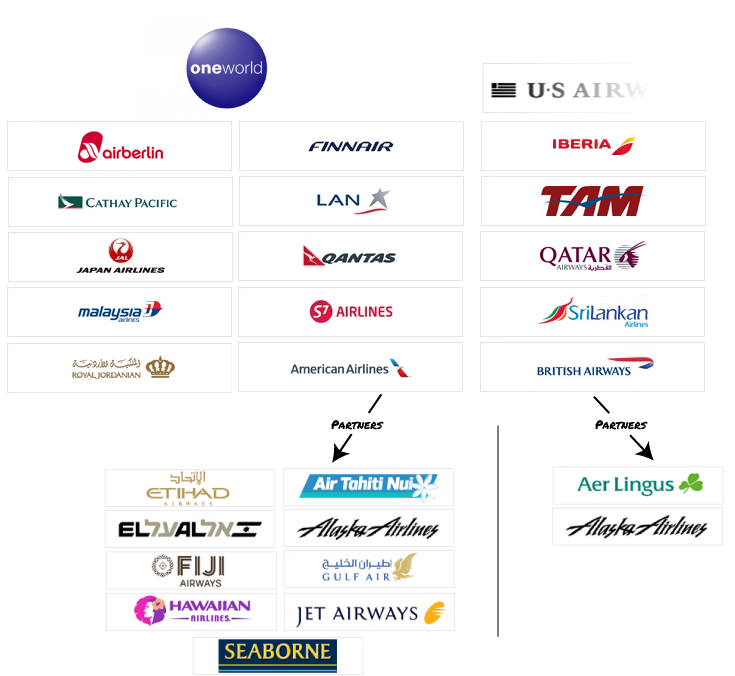
Skyteam-Delta is the US member airline of Skyteam:
Star Alliance-United is the US member airline of Star Alliance (*A):
I’ve broken out the partner airlines of AA, DL, and UA along with some notes to watch out for among these partners. Earlier in this post I mentioned Alaska Airlines has partners but is not a member of an alliance. As you can see above they partner with AA, British Airways (BA), and Delta. This means that Miles in Delta, AA or BA can be used to book flights on Alaska Airways (AS).
Other examples of partners of multiple airlines in different alliances are Aer Lingus (US, BA), Hawaiian (Everyone), Air Tahiti Nui (AA, DL), and Jet Airways (AA, UA).
Why Partnerships Are Important
Partnerships expand the places an airline can fly you without expanding the planes the airline has to manage and fill. You’ll know you’re on a codeshare flight because you’ll see two or more flight numbers, something like DL7735 and CI008. The Flight can be sold as if it were a Delta flight–but it is in actuality a China Airlines flight, codeshared with Delta.
For paid flyers Alliances are important because miles flown on any one carrier are usually able to be credited to any other carrier in the Alliance/Partner network. This helps to beef up miles in one program while avoiding orphan miles spread out among many other programs.
For EQM-Zero flyers like ourselves Alliances and partners are important because award seats at the low level on any one partner airline are usually able to be booked by any other partner’s program. This is also where the most confusion in using frequent flyer miles comes from. A common way of thinking is:
If the flight is an Alaska Airlines Flight, and I have AA miles, I need to convert my miles to Alaska and then use them to book the flight with Alaska.
Know that if you think that way you’re not alone. Many people, even good friends of mine, have fallen into that type of trap. Sadly the airlines don’t do much to try to help make things any easier on you.
Let’s take apart the above thinking, and show how exactly partner bookings work.
Example: Alaska Airlines Partner Award Booking
Earlier in this post I mentioned that people get confused easily into thinking they need to somehow convert their miles to fly on a partner airline. Using Alaska as an example lets look at booking an Alaska flight with AA miles, with BA miles and with DL miles.
Sample flight: One Way, SEA-DEN, May 20, 2014.
Booking with AA Miles:
Booking with DL Miles:
Booking with BA Miles:
And Finally, Booking with Alaska Miles
Same Exact Flight. Same day. Each host program, or program you have miles in, charges different amounts of Miles and Money for this flight. The reason is because Host programs each set the rules for their awards. Examples of these rules, and the above pricing discrepencies are:
- AA is Charging us 12,500 miles and $77.50. The reason for the $77.50 is mostly a close-in ticketing fee of $75. This is charged by AA for award flights booked within 21 days. We strive to avoid these fees whenever possible here on Milenomics, and should be crafting our own Award Tool Belts to do so.
- DL is charging us 25,000 miles and $2.50. Delta does not currently allow one way tickets, so we’re stuck paying full round trip price for this flight (in miles). Good nes is no close in fee here.
- BA is only charging us 7,500 miles and $2.50 for this flight. Unfortunately AS flights cannot be booked online at www.britishairways.com, but for a good overview of how to book with avios, see this post. Like Delta, BA does not charge a close-in ticketing fee either.
- Alaska themselves are charging 12,500 miles and $2.50.
As you can see the same flight can be booked for totally different amounts of Miles and Money. The number one rule of booking awards on partner airlines is:
The rules of the host program you hold your miles in are the rules of the skies for you.
What we shouldn’t do is look up Alaska’s rules and award chart, see that one way flights are 12,500 miles and $2.50 and think that should be the amount we pay in Delta miles, AA miles, or BA miles. Host Programs are free to charge more or less than each other for the same partner seats.
An even more example of this is Air Tahiti Nui, a partner of both Delta and AA. When booking Air Tahiti Nui with Delta miles you will pay Fuel Surcharges. Delta has decided to add these to the booking. When booking the same partner flight with AA miles as your host program you will not pay Fuel surcharges.
The Killer Benefit of Booking Partner Flights
Your eyes (and wallets) should always look to partner awards first for one simple fact:
Partner awards always price out at the lowest (saver) level.
For all the grief that a simple booking with Delta miles will give you, making sure your booking only has partner flights will ensure you only pay low level for your Delta award.
Similarly, low level awards make sure that your miles stretch the farthest, and are the best value you can possibly extract. Dont’ shy away from a partner flight because you fear flying an unknown carrier–instead get to know your carriers! I’m of the opinion that foreign, or lesser known carriers almost always offer better service in air–allowing you to avoid the dreded denial-of-service attack US mainline carriers often carry out on us.
Partner Airlines Aren’t Always Shown in Award Searches
By far the most frustrating part of searching for and booking awards are that partner airlines aren’t always shown in award searches. Searching for our above SEA-DEN flight on britishairways.com does not return Alaska Flights. If you don’t know that fact you’d assume there are no flights which can be booked with BA Avios.
Only by knowing that British Airways and Alaska are partners and doing the search elsewhere, either on AA.com, Delta.com or Alaskaair.com can we then call BA and book over the phone. Many, many award flights are booked without knowing about partner availaibitly. This usually results in wasted miles, money, or both.
Update: Diamond Vargas has a great tip in the comments section, be sure to check it out. Thanks again Diamond!
Expand and Study
In the end Partner airlines are a great resource when booking awards. They not only allow you to travel to more desitinations, they also save you miles by always booking at the low level. Keep an eye on the partners of your Host program, and learn which search engines show partner flights, and when you’ll need to call in to book an award.
An idea I’ve thought about is a “better know a partner” series here on Milenomics, where we highlight partners, and how to book flights with different host programs. I worry this type of series would get a bit repetitive, let me know if you do think there’s a need for it, and I’ll reconsider.

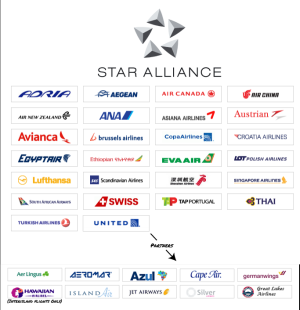

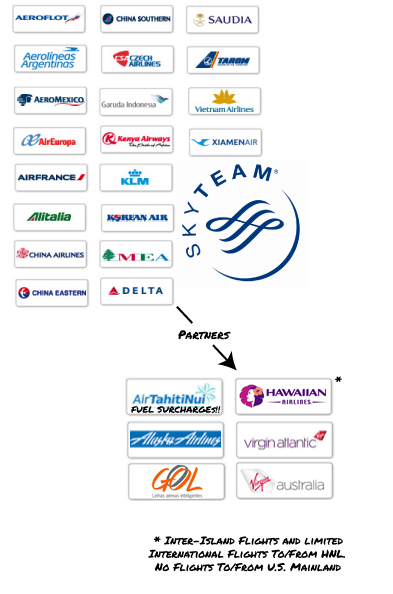
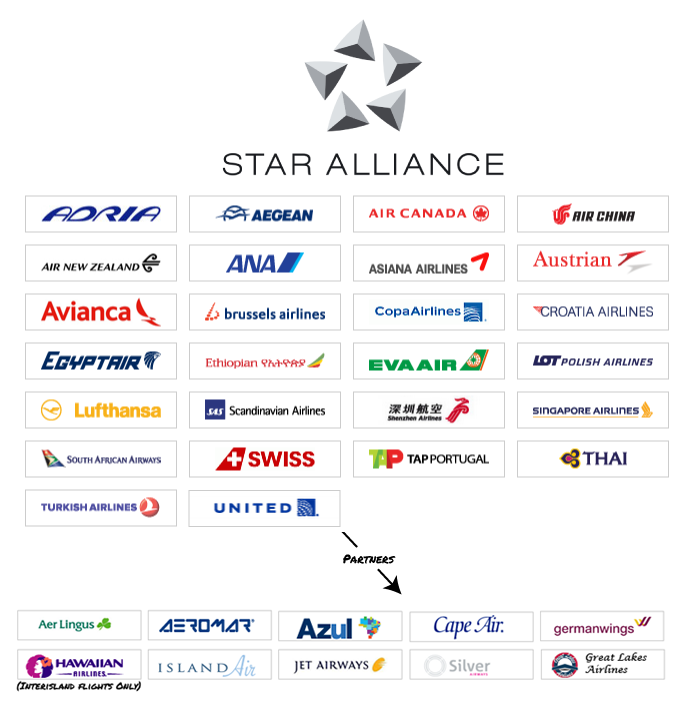






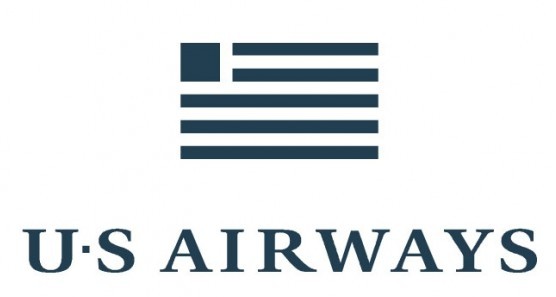
Nice writeup. Here’s what I’d find most useful:
1) For the main alliance airline(s), a list of the partners that don’t show up in their online search engines. (ie Alaska & Aer Lingus for BA)
2) For these “missing” airlines, alternative sites to search for their availability (again AA.com or Delta.com)
This is what I’m constantly having to check/remember when I’m trying to book an award. Which partners are not being represented and where I can go online to check availability before calling in.
Hans–
Just google “Consolidated List of Airline Partners And Which Are Bookable Online” — the first hit should be exactly what you’re looking for. It’s organized to directly address your #1 above, but if you just CTRL F search the page for the airline you’re looking to fly on, you’ll find which lists that airline appears under as bookable online and can therefore answer your #2. Then bookmark the page for future reference.
Diamond Vargas: Great tip, and super quick reply to Hans!
That page is http://www.thepointsguy.com/2013/07/consolidated-list-of-airline-partners-and-which-are-bookable-online for anyone else interested. No harm in using outside links here on Milenomics.
Unfortunately that post would require regular updates to remain accurate and is no longer up to date.
Awesome Diamond Vargas! Thanks for the link.
I should know better than to make a request before googling!
Great post. I especially liked the comparison of the four ways to book an award flight.
One aspect of partner travel is that while service in the air may be superior on foreign partner airlines, service on the ground may not. We had a nightmarish time at IST six months ago when our TK flight was delayed and we needed to rebook connecting flights. It was such a mess that I swore I would not fly TK again. The TK staff in Dallas, where we connected, was only minimally better, and their oversights/ignorance caused more troubles when we tried board our connecting United flight. A great CSR at United saved the day but it was a close call and very stressful.
Status would not have helped and those up front were just as frustrated as the rest of us. The bottom line was the TK staff were slow at the computer and did not speak English well. The Dallas route was relatively new then and to us it did not seem that TK was ready for prime time. I do hope things are better by now.
I believe that MommyPoints had a very tough time cancelling an award ticket with a South American airline – maybe LAN? I think that it sometimes just comes with the territory.
On the other hand, I had a great experience with Aegean, despite the fact I could never manage to get them on the phone. But they were great about responding to email and helped me that way, before the trip began.
So I would caution your readers that while one can get some great deals and find award sweet spots, as with all foreign travel, be prepared for things to go differently when interacting with foreign carriers.
Thanks for the write up. I have a couple questions for you;
1. Is it safe to say that all alliance airline flights will show up in all the airline search engines (e.g. if I search on delta’s website for a flight, will it always show me all available flights on alliance airlines), or is this also a case where certain airline search engines will only show certain flights from certain “allies”? If the later is true, how do we know what is missing?
2. When you search an airlines “where we fly” route charts (e.g. Delta’s interactive route map: http://www.delta.com/content/www/en_US/traveling-with-us/where-we-fly/routes.html), does that show only where their alliance flies, or does it also show where their partners fly?
3. Lets say you have Delta points and want to get from Washington DC to somewhere in Europe. What should your strategy be for finding out what your destination options are? Obviously you can search Delta’s route charts but then to see where all their partners go, do you then have to individually search each partners route charts to see what your options are (and then try to book over the phone if the search engine doesnt bring it up)?
Jonathan:
1) Always assume Delta is not showing you all the correct flights. Delta’s award search is horrible. I’m writing a post for later today about a sample booking I did with Delta, and it may also give you more insight into this. For now, I’d suggest using a partner’s search engine and finding flights there. Alaska Airlines is not a skyteam member, but it does partner with many skyteam airlines, so you can do a search there. I also like to use a flyingblue account to search (sign up for free at http://www.flyingblue.com). Flying Blue will only show you 10 months out, so you cannot rely on it for 11 month bookings, but it does show you more accurate results than Delta.com. Finally, you’ll still need to sign up for a Virgin Atlantic account to search for those flights, and you’ll also want to search with Virgin Australia directly if you’re interseted in flights to Australia. It seems daunting, but these search engines all work so much better than Delta’s that you’ll come to prefer them as time goes by.
2)The route map that you can access from there does show some partners and alliance members. Some major partners like Alaska are missing from this map, another is Air Tahiti Nui. Again, a single source is not enough, especially with Delta, but even with other programs. You want to have as much information at your disposal. Going direct to the sources and seeing the route map of the partner is always your best bet. Our next post in this series is on routes, so be sure to read it for more info as well.
3)The strategy I suggest is to look at the carriers who fly international, and identify first those who fly from DC-Europe. Virgin Atlantic flys to London from IAD, Air France to CDG(Paris), and KLM to Amsterdam. I always advice that you search these over-water flights first. Finding an outbound and a return overwater to/from IAD will be the biggest challenge. As a backup search from JFK since you can probably fly to JFK easily from DC. Once you’ve got flights to the European continent intra-europe flights are easier to access. You’ll also have the benefit of a stopover, whcih means you could stay in CDG/AMS/LHR for a few days if no flights to your ultimate desitnation are available right away, and then continue on. I realise this answer is packed pretty densely with info, and might be intimidating–but feel free to reply if you have more specific questions.
Booking anything with delta is tough, but for a walkthrough I’ve got a video on this page: http://www.milenomics.com/2013/10/using-delta-miles-get-south-africa-business-class-4-cpm/ where I book flights to South Africa on Air France (in business). Check it out, it too may help.
;
Thank you for your reply. I asked specifically about Delta, but my question was more so trying to get at the steps one should go through booking trips with miles on any airline (e.g. take my example and use United instead, or AA instead). It sounds like what you recommend, is to search partners, in addition to the actual airlines website. Is that necessary with AA and United as well?
For #3 you suggested “to look at the carriers who fly international, and identify first those who fly from DC-Europe.” I am assuming from your video, you accomplish this through the “Airline Route Mapper” tool? Sorry if I am getting ahead of myself and asking you questions that will go on the routes post.
Jonathan,
United’s search engine is very good–and shows nearly all Star Alliance partners. It may not show non-alliance partners very well, and does leave out SQ as well. An alternate to try is the ANA search engine–but using the ANA search engine is tricky, and you also may need miles in your account to do so. I’d suggest you also check out the awesome search tools at http://wandr.me/Award-Search/. These are usually for harder to find flights, and also are good for checking to make sure flights are really not available.
AA’s site is a mixed bag–good enough to show many partners, but missing some big ones (like Cathay Pacific, LAN, and JAL among others). A better oneworld search engine is Qantas, or British Airways. British Airways doesn’t show Alaska flights, even though it partners with Alaska.
The best suggestion I can give you is to work backward with Award searches. Don’t do a single search until you know the routes and who flies where. Then target a search engine that is certain to show the airline you’re looking at flying. I also usually work the return flights first but that’s more personal preference than anything.
For #3 I do use Airline Route Mapper–however the author of the tool has not updated it in quite some time 🙁 which means it is becoming less and less useful as routes change and it does not. Another resource for routes is http://www.airlineroutemaps.com/. Finally, you can always google “[Airline] +route map”, and pull the route maps from the airline’s sites directly. A good rule of thumb is that the carrier will fly to the major airports in their home country–so Air Fraince-CDG/KLM-AMS/British Airways-LHR/Alitalia-FCO/Lufthansa-MUC/FRA, etc. You’ll likely not find flights from the US to a country the airline is not based in due to http://en.wikipedia.org/wiki/Cabotage. There are very, very few exceptions to this rule.
.
Thanks for the response. I also found http://www.flightconnections.com/ though I am not sure how “up to date” it is, the creator last discussed it last november on flyertalk. https://www.flyertalk.com/forum/travel-tools/1455361-flightconnections-com-worldwide-flights-route-map.html
So I did a quick search on delta’s route charts, and I found that not only is it showing flights from other carriers in the alliance, but Delta also has something called “connection carriers”. Do other airlines have these too? Should we think of these as partners as well, or are they something else? Do they have special rules, or do they always show up when you search delta flights? If I have points in a connection carrier, can I use them on Delta, or is a 1 way relationship?
If these carriers are trying to make things as confusing as possible, they are certainly doing an excellent job!
Jonathan: Connection carriers are smaller, regional Flights inside the US. Other airlines have these types of small DBA’s who handle the short flights from larger to smaller regional airports. Think of them as Delta flights, you’ll earn delta miles on them when you fly, and can book seats on them as long as they have open seats.